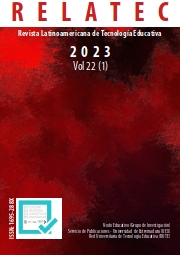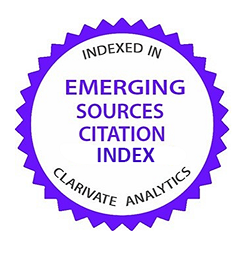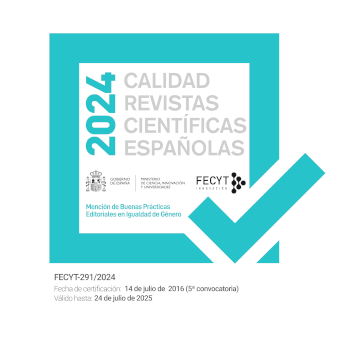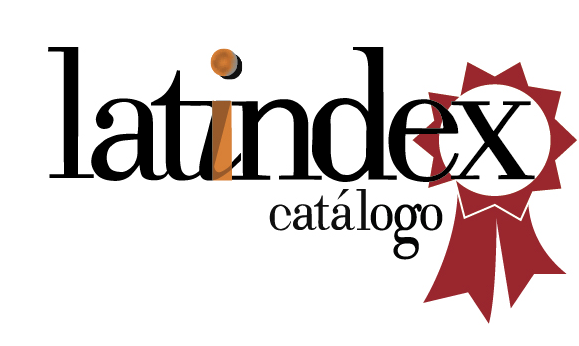Perception of adolescents about the consumption of social networks
DOI:
https://doi.org/10.17398/1695-288X.22.1.123Keywords:
Information and communication technologies, social networks, consumption, Secondary Education, AdolescenceAbstract
Adolescents participate in social networks on a regular basis as a new space for leisure and entertainment among this group, with little awareness of responsible use. The purpose of this study was to analyse the consumption of digital media and social networks in young people, as well as to assess their influence on the family and socio-educational environment. The research, of a cross-sectional, descriptive and correlational nature, was carried out with the participation of 104 students of Compulsory Secondary Education (ESO) from an educational centre in the Autonomous Community of the Region of Murcia, by means of the completion of a Likert scale questionnaire. From the results obtained, it is evident that there are significant differences in the use of social networks, according to gender and that there is a evidence of a relationship between their perception of digital competence and participation in social networks; on the other hand, adolescents do not perceive risky behaviour, as well as the possibility of having conflicts in their socio-family environment due to their participation in social networks.
Downloads
References
Argente, E., Vivancos, E., Alemany, J., y García-Fornes, A. (2017). Educando en privacidad en el uso de redes sociales. Education in the Knowledge Society, 18(2), 107-126. https://doi.org/10.14201/eks2017182107126
Arnaiz, P., Cerezo, F., Giménez, A. M., y Maquilón, J. J. (2016). Conductas de ciberadicción y experiencias del ciberbullying entre adolescentes. Anales de psicología, 32(3), 761-769. http://dx.doi.org/10.6018/analesps.32.3.217461
Ballesta, F. J., Lozano, J., y Cerezo, M. C. (2018). Internet Use by Secondary School Students: A Digital Divide in Sustainable Societies? Sustainability, 10(10), 3703. https://doi.org/10.3390/su10103703
Ballesta, F. J., Lozano, J., Cerezo, M. C., y Castillo, I. S. (2021). Participación en las redes sociales del alumnado de Educación Secundaria. Educación XX1, (24)1, 141-162. http://doi.org/10.5944/educXX1.26844
Ballesta, F. J. (Dir.), Lozano, J., Cerezo, M. C., Guardiola, P., Alcaraz, S., Castillo, I. S., Angosto, R., y Céspedes, R. (2015). El uso y la interacción de las tecnologías de la información y la comunicación (TIC) en el alumnado de educación secundaria obligatoria de la Región de Murcia. Universidad de Murcia. https://digitum.um.es/digitum/handle/10201/106721
Cantón, I., Arias, A. R., y Ruth, A. (2019). Acceso no regulado a internet y autopercepción de la imagen en las redes sociales. Revista científica electrónica de Educación y Comunicación en la Sociedad del Conocimiento, 19(1), 174-209. https://doi.org/10.30827/eticanet.v19i1.11866
Colás, P., De Pablos, J., y Ballesta, F. J. (2018). Incidencia de las TIC en la enseñanza en el sistema educativo español: una revisión de la investigación. RED. Revista de Educación a Distancia, 56. http://dx.doi.org/10.6018/red/56/2
De Frutos, B., y Marcos, M. (2017). Disociación entre las experiencias negativas y la percepción de riesgo de las redes sociales en adolescentes. El profesional de la información, 26(1), 88-96. https://doi.org/10.3145/epi.2017.ene.09
De la Hoz, J. (2016). Impacto de las redes sociales virtuales en estudiantes adolescentes: Informe de investigación. Revista Internacional de Tecnologías en la Educación, 3(1), 53-63. https://www.researchgate.net/publication/314099990
De la Hoz, J. (2018). Ventajas y desventajas del uso adolescente de las TIC: visión de los estudiantes. Revista Complutense de Educación, 29(2), 491-508. http://dx.doi.org/10.5209/RCED.53428
De la Hoz, J. (2021). Evolución del uso de las TIC por parte de los adolescentes en los últimos años: luces y sombras. Aloma. Revista de Psicología, Ciències de l’Eduació i de l’Esport, 39(1), 39-47. https://doi.org/10.51698/aloma.2021.39.1.39-47
Fernández de Arroyabe, A., Eguskiza, L., y Lazkano, I. (2020). Adolescentes y patrones de género: consumo televisivo y su seguimiento en redes sociales. IC - Revista Científica de Información y Comunicación, 17, 417-436. http://dx.doi.org/10.12795/IC.2020.i01.18
Garmendia, M., Jiménez, E., Karrera, I., Larrañaga, N., Casado, M. A., Martínez, G., y Garitaonandia, C. (2019). Actividades, mediación, oportunidades y riesgos online de los menores en la era de la convergencia mediática. Editado por el Instituto Nacional de Ciberseguridad (INCIBE). https://doi.org/10.13140/RG.2.2.24723.02088
George, D., y Mallery, P. (2003). SPSS for Windows step by step: A Simple Guide and Reference. 11.0 Update (4.ª ed.). Allyn & Bacon.
Gewerc, A., Fraga, F., y Rodés, V. (2017). Niños y adolescentes frente a la Competencia Digital: Entre el teléfono móvil, youtubers y videojuegos. Revista Interuniversitaria de Formación del Profesorado, 89(31), 171-186. http://hdl.handle.net/11162/166346
Gómez, P., Rial, A., Braña, T., Golpe, S., y Varela, J. (2017). Screening of Problematic Internet Use among Spanish adolescents: Prevalence and related variables. CyberPsychology, Behavior, and Social Networking, 20(4), 259-267. https://doi.org/10.1089/cyber.2016.0262
Heredia, N., y García, E. (2017). Posibles riesgos del uso de las redes sociales en adolescentes. Revista de estudios e investigación en psicología y educación, extr.(13), 6-10. https://doi.org/10.17979/reipe.2017.0.13.2120
Hernández, J. M., García, M. P., Mancheño, M. A., y Sánchez, A. (2012). Trabajos empíricos. En M. P. García & P. Martínez (Coord.), Guía práctica para la realización de Trabajos Fin de Grado y Trabajos Fin de Máster (pp.247-284). Edit.um.
Ibáñez-López, F. J., Maurandi-López, A., y Castejón-Mochón, J. F. (2022). Docencia práctica virtual y adquisición de competencias en la formación estadística de maestros durante el confinamiento sanitario. PNA, 16(2), 99-113. https://doi.org/10.30827/pna.v16i2.21364
IBM Corp. (2016). IBM SPSS Statistics for Windows, Version 24.0. IBM Corp.
Instituto Nacional de Estadística (2021). Encuesta sobre Equipamiento y Uso de Tecnologías de Información y Comunicación en los Hogares. https://www.ine.es/prensa/tich_2021.pdf
Lau, W.W., y Yuen, A. H. (2016). The relative importance of paternal and maternal parenting as predictors of adolescents´home Internet use and usage. Computers & Education, 102, 224-233. http://dx.doi.org/10.1016/j.compedu.2016.09.002
Livingstone, S. (2020). Can we “flip the script” from counting hours of screen time to distinguishing different types of online experiences? Parenting for a Digital Future. LSE. https://blogs.lse.ac.uk/parenting4digitalfuture/2020/12/16/from-screen-time-to-online-experiences/
Livingstone, S., y Brake, D. (2009). On the Rapid Rise of Social Networking Sites: New Findings and Policy Implications. Children & society. https://doi.org/10.1111/j.1099-0860.2009.00243.x
Livingstone, S., Kardefelt-Winther, D., Kanchev, P., Cabello, P., Claro, M., Burton, P., y Phyfer, J. (2019). Is there a Ladder of Children’s Online Participation?: Findings from Three Global Kids Online Countries. LSE. https://blogs.lse.ac.uk/parenting4digitalfuture/2019/06/19/a-ladder-of-childrens-online-participation/
Livingstone, S., Lim, S. S., Nandi, A., y Pham, B. (2019). Comparative global knowledge about the use of digital technologies for learning among young children. In O. Erstand, R. Flewitt, B. Kümmerling-Meibauer, & I. S. Pires
Pereira (Ed.). The Routledge handbook of digital literacies in early childhood (pp. 79-91). Routledge. https://books.google.es/books?hl=es&lr=&id=9s6gDwAAQBAJ&oi=fnd&pg=PA79&dq=Sonia+Livingstone+childhood+and+ICT&ots=zqf-WI968n&sig=yHZbDy6M7VJN8ladezYLCDqUVFk#v=onepage&q&f=false
Martínez, J. M. (2017). Estudio de caso sobre la relación entre redes sociales y escuela en los procesos de aprendizaje. Revista UNES, (3), 42-62. http://hdl.handle.net/10481/58816
Megías, I., y Rodríguez, E. (2018). Jóvenes en el mundo virtual: usos, prácticas y riesgos. Centro Reina Sofía sobre Adolescencia y Juventud, Fad. https://doi.org/10.5281/zenodo.3638192
Prats, M. A., Torres, A., Oberst, U., y Carbonell, X. (2018). Diseño y aplicación de talleres educativos para el uso saludable de internet y redes sociales en la adolescencia: descripción de un estudio piloto. Pixel-Bit, Revista de Medios y Educación, (52), 111-124. http://dx.doi.org/10.12795/pixelbit.2018.i52.08
Ramos, I., López, C., y Torrecillas, T. (2018). Percepción de riesgo online en jóvenes y su efecto en el comportamiento digital. Comunicar, Revista Científica de Comunicación y Educación, 26(56), 71-79. https://doi.org/10.3916/C56- 2018-07
Roca, G. (Coord.) (2015). Las nuevas tecnologías en niños y adolescentes: Guía para educar saludablemente en una sociedad digital. Hospital Sant Joan de Déu.
Smahel, D., Machackova, H., Mascheroni, G., Dedkova, L., Staksrud, E., Ólafsson, K., Livingstone, S., y Hasebrink, U. (2020). EU Kids Online 2020: Survey results from 19 countries. EU Kids Online. https://doi.org/10.21953/lse.47fdeqj01ofo
Stoilova, M., Livingstone, S., y Khazbak, R. (2021) Investigating Risks and Opportunities for Children in a Digital World: A rapid review of the evidence on children’s internet use and outcomes. Innocenti Discussion Paper, 2020-03.
Tejada, E., Castaño, C., & Romero, A. (2019). Los hábitos de uso en las redes sociales de los preadolescentes. RIED. Revista Iberoamericana de Educación a Distancia, (2)22, 119-133. http://dx.doi.org/10.5944/ried.22.2.23245
Torres, J. C., Duart, J. M., Gómez, H. F., Marín, I., y Segarra, V. (2016). Usos de Internet y éxito académico en estudiantes universitarios. Comunicar, Revista Científica de Comunicación y Educación, 24(48), 61-70. http://dx.doi.org/10.3916/C48-2016-06
Downloads
Published
Issue
Section
License
Authors who publish in this journal accept the following conditions:
1. The Author retains copyright in the article. Upon acceptance of the article, the author shall grant to the Publisher the right of first publication of the article. with the dcoument registered with the Creative Commons Attribution-NonCommercial-NoDerivative 4.0 International (CC BY-NC-ND) license, which allows to third parties to use what is published whenever they mention the authorship of the work and the first publication in this journal.
2. Authors can make other independent and additional contractual agreements for the non-exclusive distribution of the article published in this journal (eg, include it in an institutional repository or publish it in a book) provided they clearly indicate that the work was published for the first time in this journal.
3. Authors are allowed and recommended to publish their work on the Internet (for example on institutional or personal pages) before and during the review and publication process, as it can lead to productive exchanges and a greater and faster diffusion of published work (see The Effect of Open Access).









